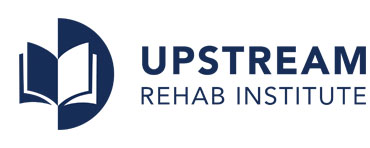The Comprehensive Manual Therapist (CMT) certification is a tier 1 certification earned by physical therapists who demonstrate the highest level of evidence-informed orthopaedic manual physical therapy (OMPT) skills. A clinician with the CMT designation represents someone who is an expert general orthopaedic physical therapist who combines advanced clinical reasoning with OMPT technical skills to skilfully screen, manage, and treat their patients.
Clinicians who wish to earn the Comprehensive Manual Therapist Certification must successfully complete all courses listed below, as well as a comprehensive written and practical exam:
CT: Comprehensive Management of the Cervicothoracic Region (Cost: $495)
This course focuses on skilled examination and manual therapy treatment of the cervical and thoracic spine – including the upper cervical spine and junctional regions. Clinical reasoning and evidence-based practice are underscored throughout instruction utilizing thrust and non-thrust manual techniques and exercise. Learning is enhanced with the practical application of patient cases. This is a lab-intensive course with the majority of time spent in skill acquisition with supervised practice encouraged.
UQ: Comprehensive Management of the Upper Quarter (Cost: $495)
This course focuses on skilled examination and manual therapy treatment of the shoulder, elbow, wrist, and hand. Clinical reasoning and evidence-based practice are underscored throughout instruction utilizing thrust and non-thrust manual techniques, neurodynamics, and exercise. Learning is enhanced with the practical application of patient cases. This is a lab-intensive course with the majority of time spent in skill acquisition with supervised practice encouraged.
LP: Comprehensive Management of the Lumbopelvic Region (Cost: $495)
This course focuses on skilled examination and manual therapy treatment of the lumbar spine and pelvis. Clinical reasoning and evidence-based practice are underscored throughout instruction utilizing thrust and non-thrust manual techniques, neurodynamics, and exercise. Learning is enhanced with the practical application of patient cases. This is a lab-intensive course with the majority of time spent in skill acquisition with supervised practice encouraged.
LQ: Comprehensive Management of the Lower Quarter (Cost: $495)
This course focuses on skilled examination and manual therapy treatment of the hip, knee, ankle and foot. Clinical reasoning and evidence-based practice are underscored throughout instruction utilizing thrust and non-thrust manual techniques, neurodynamics, and exercise. Learning is enhanced with the practical application of patient cases. This is a lab-intensive course with the majority of time spent in skill acquisition with supervised practice encouraged.
TM1: Thrust Manipulation 1 – Lower Extremity & Basic/Intermediate Spine (Cost: $495)
This 2-day lab intensive course focuses on enhancing the participant’s background knowledge, clinical reasoning process, and technical skill set related to the use of high velocity low amplitude (HVLA) thrust manipulation techniques in the management of patients with spinal or lower extremity impairments. Participants can expect to become proficient with common manipulative techniques directed to the lower extremity joints and with basic and intermediate techniques directed to the cervical, lumbar, and thoracic spinal regions. Furthermore, evidence based approaches and reasoning related to the appropriate use of spinal manipulation will be emphasized.
TM2: Thrust Manipulation 2 – Upper Extremity & Advanced Spine (Cost: $495)
This 2-day lab intensive course is designed to follow MT1 and further refine clinical reasoning and develop more advanced technical skill in regards to effective & appropriate use of high velocity low amplitude (HVLA) thrust manipulation techniques in the management of patients with spinal or upper extremity impairments. More advanced and technically skilled spinal techniques and manipulation of the upper cervical spine will be emphasized, in addition to manipulative techniques targeting the upper extremity.
